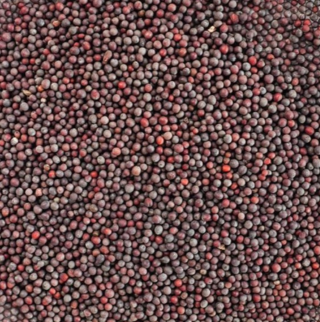COloursking
SMALL BLACK MUSTED SEEDRAI ( SMALL BLACK MUSTED SEED)
It seems like you are referring to “rai,” which is indeed a term used for mustard seeds in India. Mustard seeds come in different varieties, and one of them is indeed black or brown mustard seeds. Here’s some information about black mustard seeds:
- *Botanical Name:* Brassica juncea is the botanical name for mustard, and it includes various cultivars, among them is the brown or black mustard.
- *Color and Size:* Black mustard seeds are small, round seeds that are dark brown to black in color. They are a bit larger than yellow or white mustard seeds.
- *Flavor:* Black mustard seeds have a stronger and more pungent flavor compared to their yellow counterparts. When crushed or ground, they release a distinct, spicy aroma.
- *Culinary Uses:* Mustard seeds, both yellow and black, are a common spice used in Indian cuisine. They are often used whole in tempering (tadka) for various dishes. The seeds can also be ground into mustard paste or powder, which is a key ingredient in many mustard sauces and condiments.
- *Health Benefits:* Mustard seeds, particularly black mustard, contain various nutrients and phytochemicals. They are a good source of selenium, magnesium, and omega-3 fatty acids. Some studies suggest that mustard seeds may have potential health benefits, including anti-inflammatory and antimicrobial properties.
When using black mustard seeds in cooking, they are often first tempered in oil or ghee to release their flavor before being added to dishes. The distinct taste of mustard seeds adds depth and spiciness to a variety of recipes. Keep in mind that the intensity of the flavor may vary depending on the specific variety of mustard seeds and how they are prepared.
MUSTED SEED AND ALSO USED AS A COOKING OIL
Yes, mustard seeds are not only used as a spice but are also a source of mustard oil. Here’s some information about both uses:
- *Mustard Seeds (Spice):*
– *Varieties:* Mustard seeds come in different varieties, with the two main types being yellow or white mustard seeds (Brassica alba) and brown or black mustard seeds (Brassica juncea).
– *Flavor:* Mustard seeds, when crushed or ground, release a pungent and spicy flavor. The intensity of the flavor can vary between the different types of mustard seeds.
– *Culinary Uses:* Mustard seeds are a common spice in many cuisines, especially in Indian, Mediterranean, and Middle Eastern dishes. They are often used whole in tempering (tadka) for various recipes, or they can be ground into mustard paste or powder to add flavor to sauces, dressings, and marinades.
- *Mustard Oil:*
– *Extraction:* Mustard oil is extracted from mustard seeds through a process of pressing or grinding the seeds and then extracting the oil. The oil has a distinctive pungent flavor.
– *Color and Flavor:* Mustard oil is often yellow to amber in color and has a strong, peppery taste. The pungency of mustard oil is due to compounds such as allyl isothiocyanate.
– *Culinary Uses:* Mustard oil is commonly used in Indian, Bangladeshi, and Pakistani cuisines, among others. It adds a unique flavor to dishes. In some regions, mustard oil is also used for pickling.
It’s important to note that in some countries, mustard oil is labeled as “For External Use Only” due to its high erucic acid content, which, in excessive amounts, can be harmful when consumed. However, in many places, including India, mustard oil labeled as “edible” is available, which has a lower erucic acid content.
Always check the regulations and recommendations regarding mustard oil consumption in your region. If you have any health concerns or dietary restrictions, it’s advisable to consult with a healthcare professional or a nutritionist.



Get In Touch
Location
1082, LIC COLONY, NEAR BANK COLONY, SRI GANGANAGAR, RAJASTHAN 335001
coloursking015@gmail.com
CALL US
+91 76657 97111
+91 76657 97111
TELEGRAM
+91 76657 97111
Hours
Mon:10am – 7pm
Tue: 10am – 7pm
Wed: 10am – 7pm
Thur: 10am – 7pm
Fri: 10am – 7pm
Sat: 10am – 7pm
Sun: Closed
